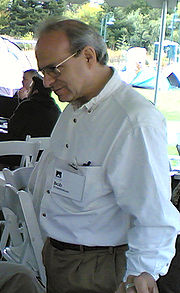Bob Frankston re-imagines the Internet


I should say at the top that I have known Bob online for nearly a decade and find him to be among the most brilliant, original thinkers we have on the resource, as well as the best writer. While I can describe what he is talking about here, he can explain it better here.
It's his latest effort, called Understanding Ambient Connectivity. And it's deceptively simple.
Stripped of all the regulatorium and arguments about owning infrastructure, the Internet still works, and provides a model for assuring abundant bits to everyone.
We're talking about things like best efforts, connecting first while paying later, and separating services from their transmission.
Simplicity has been lost this decade as carriers gained sole-source control over customers and sought to extract monopoly rents. Billions in subsidies have been pocketed, Moore's Law has been ignored, and we now pay more for fewer bits than we did a decade ago.
What to do? Here's what Frankston suggests:
Rather than having to negotiate a deal for each application we need to be able to assume connectivity is just there – part of our ambient environment. At a technical level we can – it’s just that it’s made unavailable by business policies that date back to 19th century telegraphy when we financed scarce capacity by buying services.
The capacity is no longer scarce – it just seems that way because of these policies.
Align incentives properly and this can change, he writes. He notes a recent AT&T suggestion that it abandon its copper wires and runs with it. Light that copper with the best technology available, open the access paths to wireless, and make that utility available to everyone, he suggests. Markets will boom.
We are accustomed to thinking of the Web as the Internet, he writes, but that's just its visible face. Separate services from transmission and passive data like fire alarms or bar codes become valuable to us.
One way to do this is with a Globally Unique ID, which every one of us can have (along with all our devices) using IPv6. You can then track devices to their location, and know who did what, for both billing and law enforcement purposes.
Frankston's key point is that digital capacity is unlimited, and that capacity can be unleashed by separating the transmission of bits from the services those bits provide. Aligning our policies to encourage growth rather than monopoly, as the Internet was designed to do, can unleash this power.